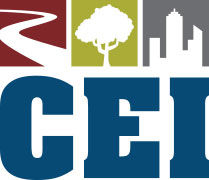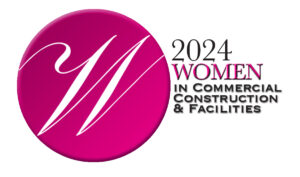In the current general business environment, management are always looking for new ideas to minimize procurement cycle and at the same time reduce cost. Forward auction and the purchase order, or PO, for short, are two critical characteristics of the contemporary approaches to procurement. This article will look at these ideas and analyse their relevance, use and effect on business processes.
Forward Auction: A Competitive Procurement Tool
A forward auction is a kind of auction in which many buyers bid for goods or services, which are offered by a single seller. In procurement, forward auctions are becoming a preferred choice among organizations to offer surplus inventory, assets or to award contracts to the suppliers.
Key characteristics of forward auctions include:
Competitive bidding: The parties make successively higher offers with a view that price will increase.
Transparency: It is important that all participants are able to view the current highest bid so that competition will not be unfair.
Time-bound: Auctions are normally confined to a certain period thus putting pressure on the bidders.
Efficiency: Finally, it is relatively fast since it can take a few hours or days to render the process complete.
Forward auctions offer several advantages in the procurement context:
Maximizing value: The nature of bidding also assists the sellers to negotiate the best price for the products they hold in the market.
Market-driven pricing: This puts consideration on the actual market price as far as is possible to make sure that as far as is possible value is delivered to the buyers and sellers.
Reduced negotiation time: Original negotiations are also ruled out by the auction format making the procurement process efficient.
Increased supplier base: Through forward auctions, a wider spectrum of potential suppliers can be reached, increasing competition and possibly identifying new trading partners.
Implementing Forward Auctions in Procurement
Identify suitable items: It is also important to note that not all goods or services are suitable for forward auctions. Stick to goods with several suppliers and well-defined requirements.
Set clear rules and parameters: Setting floor prices, second prices, and the time for the auctions to run.
Leverage technology: Conduct e-auctioning for online bidding and real time updates/issues and automation of bidding processes as appropriate.
Prepare thoroughly: Supply all necessary details to potential competitors including written specification and conditions of the sale.
Conduct post-auction analysis: Analyse the outcomes, capture feedback, and make adjustments for the next auction.
The Purchase Order Process: Foundation of Procurement
Although the forward auctions are innovative in procurement, the purchase order or commonly referred to as PO is central in most organizations buying. A purchase order therefore refers to an official written communication from the buyer to the seller that states what products or services the buyer wants exactly, how many of it and at what price.
The steps of PO process are as follows:
Requisition: One is procured by another within an organization and the procurement request gets authorized.
Vendor selection: The procurement staff works on searching and evaluating the best supplier.
PO creation: A formal purchase order is then prepared hand-writing and must contain details of the items required, quantity, the price, and the conditions of the purchase.
PO approval: Purchase order is authorized and signed by the concerned authority.
PO transmission: The approved PO is with the selected vendor as a document.
Order confirmation: The PO is received and the vendor provides a confirmation of the order with the various particulars donated in the PO.
Goods receipt or service completion: The goods ordered are received or the services ordered are provided or are to be provided.
Three-way matching: The documents received and the invoice are compared with the PO so as to confirm its authenticity.
Payment: After successful completion of matching, payment is made based own agreed upon modalities.
Benefits of a Well-Structured PO Process
Financial control: Fiscal commitment evidences are exhibited in POs to offer benefits in the budgeting as well as monetary planning processes.
Legal protection: A PO works as a legal instrument that sets the conditions to the transaction between the buyer and the seller.
Audit trail: The systematic approach of the PO process also makes it possible to give an account of compliance and analysis.
Improved supplier relationships: Effective communication of needs and specifications on how project or work is to be done and other related matters enhances better relations with the vendor.
Enhanced efficiency: Standardization of processes also helps in minimizing the variations and more efficiency in procurement activities.
Integrating Forward Auctions and PO Process
As observed, forward auctions and the classic form of the PO process may appear quite different, but liberal-thinking organizations have been trying to get the best of both worlds. Here are some strategies for combining forward auctions with the PO process:
Pre-qualification: Employ the process of PO to screen the suppliers in order to allow them bid in forward auction.
Contract auctions: Use forward auction to select contractors to supply goods for multiple years with the subsequent purchases through the standard PO.
Automated PO generation: Design the e-auction systems in a way that they should be relegated with the task of creating purchase orders from the bids received.
Reverse auctions for PO items: In case of products and services requiring bulk or routine procurement, through usually through POs, reverse auctions can provide for the means of identifying the most suitable supplier as well as the most competitive price.
Dynamic pricing agreements: Implement long-term contracts with suppliers; included in the contracts are terms that make it possible to use forward auctions periodically with the aim of adjusting to the market rate.
Conclusion
Procol’s ‘eAuctions Pro’ software is a particularly comprehensive and effective approach to transforming call auction processes, eliminating the drawbacks linked with traditional auctions for modern commercial businesses. Through the application of this forward auction tool, competitive online negotiations can be realized; the correlated cost cutting measures can be put into practice, and the overall transparency of the bidding process can be boost. The software eradicates traditional, time-consuming manual auctions, enhances compliance and offers up-to-date evaluations. Some of the special characteristics of eAuctions Pro are one-click bid, e-auction solutions, clear engagement with the supplier, mobility, and savings reports.
With such features, the platform is useful in solving the main problems of classical auctions. In this way, by providing a smooth, effective and transparent environment, Procol contributes to the modernization of procurement processes, cost optimization and receipt of extremely valuable data. This in turns results to increased efficient and competitive auctions thus placing the companies in a better place to compete in the current dynamic business world. Evidently, by using the tools from the Procol’s eAuctions Pro suite, an organisation can change the way it runs auctions within procurement with the aim of improving efficiency and validity of its procurement processes.








 The 2024 virtual Men’s Round Table will be held Q4, 2024, date TBD.
The 2024 virtual Men’s Round Table will be held Q4, 2024, date TBD.













